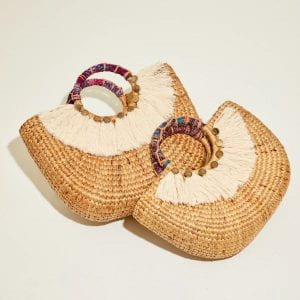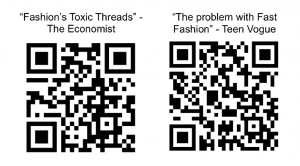With all the wastage arising from the production of fast fashion clothing and the linear economy, there is a dire need for both producers and consumers to turn to alternatives in order to not further do damage to the Earth. Producers could find alternatives ways to produce clothes sustainably, like how some fast fashion brands like H&M are doing with their Conscious Collection. Clothing brands like Uniqlo are also urging consumers to recycle and donate back their old Uniqlo clothing to generate a fashion circular economy.

Source: Ellen MacArthur Foundation
The linear “take-make-dispose” model above heavily relies on large quantities of easily accessible resources and energy, including cheap labour, which is becoming increasingly unfit for the reality now, due to its unsustainability. While fast fashion is big business, it is killing the planet, and it is important to reconsider the fashion industry model and our purchasing habits (Ellen MacArthur Foundation, n.d.). This brings us to producers moving towards a more circular economy.
A circular fashion economy is a regenerative system in which clothes are circulated for as long as their maximum value is retained, and then returned safely to the biosphere when they are no longer of use. In a circular model as shown below, products are designed and developed with the next use in mind. Less than 1% of clothing is recycled into new clothing (Fibre2Fashion, 2017). What we should do is to buy fewer clothes and opt for other alternatives, like upcycling and thrift-shopping.

Source: Greenstrategy.se
As consumers, we also have to do our part in making sure we do not add on to the demand for unsustainable fast fashion. For one, it is a trend now to upcycle clothes and ‘rework’ old clothes to new and trendy ones. There are many new local Instagram pages dedicated to selling reworked clothing like @plop.apparels and @closetlilo. Alternatively, thrift shopping is also a trend now. In Japan, thrifting is an extremely huge thing – more often than not, their prices can be more expensive than typical fast fashion clothes. There are also dedicated streets to thrift shop in Harajuku and Shinjuku.
The world population is approximated to reach nine billion people by 2030. The environment and its resources will struggle to meet human demands like never before. The goal of circular fashion is to ensure that clothes are made from safe and renewable materials, new business models increase their use, and old clothes are turned into new. This also ensures that ecosystems are protected and people are provided with dignified work. Moreover, turning to thrift shopping can also reduce the demand for unsustainable fast fashion practices.
What is your take on this?
References
Ellen MacArthur Foundation. (n.d.). Fashion and the circular economy. Retrieved October 23, 2020, from https://www.ellenmacarthurfoundation.org/explore/fashion-and-the-circular-economy
Fibre2Fashion. (2017). Less than 1% clothing recycled into new clothes: Report. Retrieved October 23, 2020, from https://www.fibre2fashion.com/news/apparel-news/less-than-1-clothing-recycled-into-new-clothes-report-229403-newsdetails.htm











 Source: (Boggon, 2019)
Source: (Boggon, 2019)
